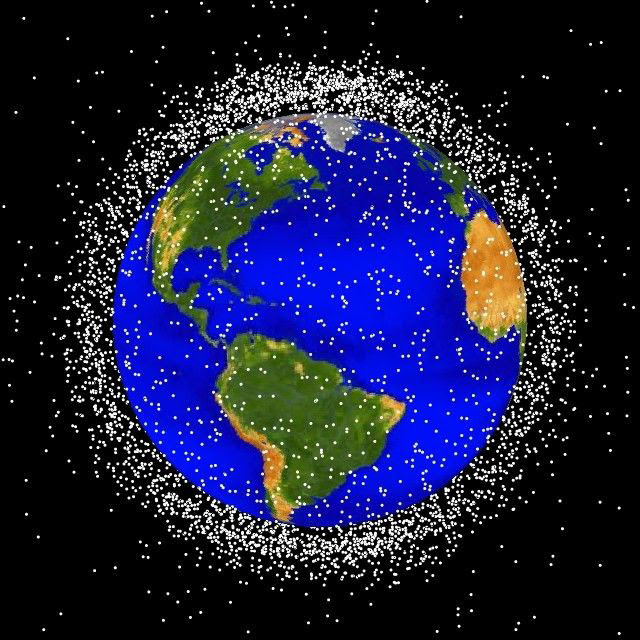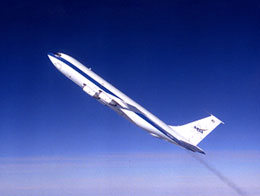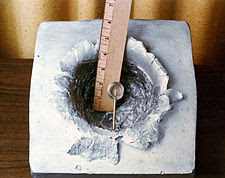
- According to NASA, there have been 187 space walks from the ISS ship alone, the last one recorded was 3/1/15. (source)
- The International Space Station (ISS) travels at an average speed of 27,724 kilometres (17,227 mi) per hour, and completes 15.54 orbits per day (93 minutes per orbit).[1][15]
- The ISS maintains an orbit with an altitude of between 330 and 435 km (205 and 270 mi) by means of reboost manoeuvres using the engines of the Zvezda module or visiting spacecraft. (Source).
- Gravity is 90% of Earth’s at these altitudes and the space walks are effected by drag, according to NASA.
- completely detached from the ISS,
- while traveling at some 17,000 + mph around the earth 130 miles up
- and have no problem with massive wind shear when they step out of the craft
- or keeping up with the space trucking ISS doing 15 laps around the earth every day.



There are millions of micro-meteors traveling at speeds as fast as 6000 mph.
More than 500,000 pieces of space debris orbit Earth, traveling at speeds up to 175,000 mph. A small piece of space debris traveling at these velocities could significantly damage a spacecraft or a satellite.It could also pose a threat to the lives of astronauts living on the International Space Station.At the low altitudes at which the ISS orbits there are a variety of space debris,[243] consisting of many different objects including entire spent rocket stages, defunct satellites, explosion fragments—including materials from anti-satellite weapon tests, paint flakes, slag from solid rocket motors, and coolant released by US-A nuclear-powered satellites. These objects, in addition to natural micrometeoroids,[244] are a significant threat. (source)
Here is how NASA says that the ships are protected, traveling at 17,200 mph (23,000 ft. per second) with debris traveling at 6,000 mph dodging some 500,000 pieces that would kill an astronot exposed on impact.
Astronauts on the International Space Station have had their own run-ins with micrometeorites, too. Last year, one slammed into one of the station’s giant windows. “Micrometeroid and orbital debris (MMOD) impacts are part of life in low Earth orbit,” says Space Safety Magazine. “MMOD impacts occur all the time on ISS and other spacecraft, although most are not easily visible through a window. Returning Space Shuttles have shown pock marks from high velocity MMODs.” As humans enter low-Earth orbit with increasing regularity, the threat posed by small bits of space debris—an errant bolt, say—goes up.
To protect satellites and astronauts (and soon, space tourists), engineers have to give the ships some sort of armor. Right now, NASA uses something called “Whipple Shielding”:
In the 1940s, Fred Whipple proposed a meteoroid shield for spacecraft, called the Whipple shield in recognition of his contribution. The Whipple shield consists of a thin, aluminum “sacrificial” wall mounted at a distance from a rear wall. The function of the first sheet or “BUMPER” is to break up the projectile into a cloud of material containing both projectile and BUMPER debris. This cloud expands while moving across the standoff, resulting in the impactor momentum being distributed over a wide area of the rear wall (Figure 2). The back sheet must be thick enough to withstand the blast loading from the debris cloud and any solid fragments that remain.
In updated versions of this design, says NASA, “bulletproof” Kevlar or other materials are placed between the outer sacrificial wall and the inside plate.
The designs amount to, essentially, putting something thick in the way that will hopefully stop the micrometeorite before it can ram its way all the way through your spacecraft. But once that hole is punctured, the strength of the shield is reduced until it can be repaired—not the greatest if you want to leave your satellite up there for years at a time, or you want your commerical space ship to do back-to-back flights. (Source)
A chip of paint at this speed in space would rip a hole in an uprotected astronot! Yet NASA has it all under control, nothing to be concerned with, we’ve done it thousands of times, logging hundreds of hours and no problema!
Space debris objects are tracked remotely from the ground, and the station crew can be notified.[248] This allows for a Debris Avoidance Manoeuvre (DAM) to be conducted, which uses thrusters on the Russian Orbital Segment to alter the station’s orbital altitude, avoiding the debris.DAMs are not uncommon, taking place if computational models show the debris will approach within a certain threat distance. Eight DAMs had been performed prior to March 2009,[249] the first seven between October 1999 and May 2003.[250] Usually the orbit is raised by one or two kilometres by means of an increase in orbital velocity of the order of 1 m/s. Unusually there was a lowering of 1.7 km on 27 August 2008, the first such lowering for 8 years.[250][251]There were two DAMs in 2009, on 22 March and 17 July.[252] If a threat from orbital debris is identified too late for a DAM to be safely conducted, the station crew close all the hatches aboard the station and retreat into their Soyuz spacecraft, so that they would be able to evacuate in the event the station was seriously damaged by the debris.
Gravity and Freefall.
Here NASA admits that drag plays a role at that altitude which means it would be impossible for an astronot untethered, or tethered to keep up with the ISS:
The Earth’s gravity is only slightly weaker at the altitude of the ISS than at the surface. However, objects in orbit are in a continuous state of freefall, resulting in an apparent state of weightlessness. This perceived weightlessness is disturbed by five separate effects:[48]
- Drag from the residual atmosphere; when the ISS enters the Earth’s shadow, the main solar panels are rotated to minimise this aerodynamic drag, helping reduce orbital decay.
- Vibration from movements of mechanical systems and the crew.
- Actuation of the on-board attitude control moment gyroscopes.
- Thruster firings for attitude or orbital changes.
- Gravity-gradient effects, also known as tidal effects. Items at different locations within the ISS would, if not attached to the station, follow slightly different orbits. Being mechanically interconnected, however, these items experience small forces that keep the station moving as a rigid body.


And now it is flat as a pancake in this view from ISS, (NASA images).

“Anyone seen any stars? NASA told us there were billions and billions of them and being in much less Earth atmosphere, we should be seeing them right?”







The ISS and spacewalking astronauts are traveling at the same rate because both are in orbit around Earth. The view of Earth through the window appears flat because too little of it is exposed to show the true curvature. The surface area of the earth is almost 200 million square miles, which divided by 500000 micrometeors means there would be less than one in 400 square miles, assuming they were all on an even surface. Finally, no river/ocean is going uphill because “down” is a matter of perspective. All it is is towards the nearest massive object, as it’s mass, and therefore gravity, will affect you the most. So going uphill is going away from earth, and none of them do that. This is why the oceans don’t arc down like you claim they should, because that would cause them to lower in depth at the center.
LikeLiked by 1 person
wind in cosmic space??? sorry, You could try to correct your article.
LikeLiked by 1 person
We live in a geocentric motionless round Earth.
LikeLike
the ISS is well below maximum low earth orbit………..it’s not in space
LikeLike